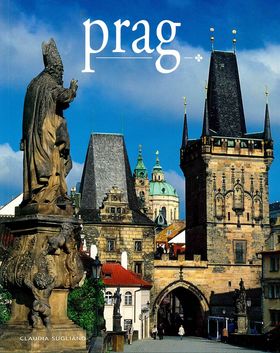Doprava od 59 Kč, při nákupu nad 2 000 Kč doprava zdarma, 70 000+ titulů skladem, více než 3 500 výdejních míst.
Válka za studena Serving it cold - - Kniha

Varianty:
Další informace:
- EAN: 9788074372391
- Autor: Vladimír Birgus, Josef Moucha
- Kategorie:
- Počet stran: 116
- Datum uvedení 2017-11
- Vazba: pevná
- Jazyk: angličtina
- Nakladatel: Kant
- Skladem 5+ ks
- doručíme pravděpodobně: v úterý 26.11.
Poprvé knižně publikovaný soubor Válka za studena je podobenstvím o kroužení kolem jádra nicoty. Fotografie ze základní vojenské služby v Československé lidové armádě obnažují svět mužů zavlečených do pasti, jíž je hra na vojáky. Původní postřehy Josefa Mouchy působí s odstupem let jako přízračné schválnosti, inscenované s početným komparsem v nákladných kulisách. Ve skutečnosti jsou záběry z počátku osmdesátých let nepřikrášleně realistickým pohledem zevnitř.
Autorem zasvěcené předmluvy je renomovaný fotograf a znalec historie fotografie Vladimír Birgus: „Právě komplexnost Mouchova fotografického deníku z vojny přispívá k tomu, že jeho fotografie vyvolávají u každého, kdo prožil základní vojenskou službu za vlády komunistů, celý gejzír vzpomínek,“ uvádí. „Je to mnohovrstevnatý pohled na vojenskou službu v době husákovské normalizace, jaký svou kvalitou, rozsahem a autentičností nemá na naší poválečné fotografické scéně obdoby. Dlouhým odstupem ještě vynikl jeho význam, protože není jenom fotografickým deníkem jednoho nedobrovolného vojáka, ale i zobecňujícím svědectvím o tehdejší době i o konfliktu mezi individualitou a totalitou.“
This is the first publication in book form of the photographic set Serving It Cold: Photographs from Basic Training in the Czechoslovak People’s Army. It is a parable about whirling round a core of nothingness. The photographs reveal the world of men dragged into a trap that pretends to be a game about being soldiers. Today, many years after they were first taken, these original photographs by Josef Moucha seem like ghostly dirty tricks, staged with numerous extras in expensive stage sets. In fact, they are shots taken at the start of the 1980s, an unembellished, realistic look from inside.
The photographs are introduced by Vladimír Birgus, a respected photographer and expert on photography: ‘It is the complexity of Moucha’s photographic diary from the army which contributes to his photographs evoking a geyser of recollections in everyone who experienced compulsory military service under Communist rule.’ ‘Unique amongst Czech documentary photographs,’ he remarks, ‘the set provides a many-layered view of compulsory military service in the years of the restored hard-line Communist regime, after the crushing of the Prague Spring reform movement in August 1968. In quality, size, and authenticity it is unparalleled in Czech post-war photography. [...] Their importance has become more evident with the passing of so many years, because they are not only the photographic diary of one conscript; they are also wide-ranging testimony about that period and about the conflict between individualism and totalitarianism.’




